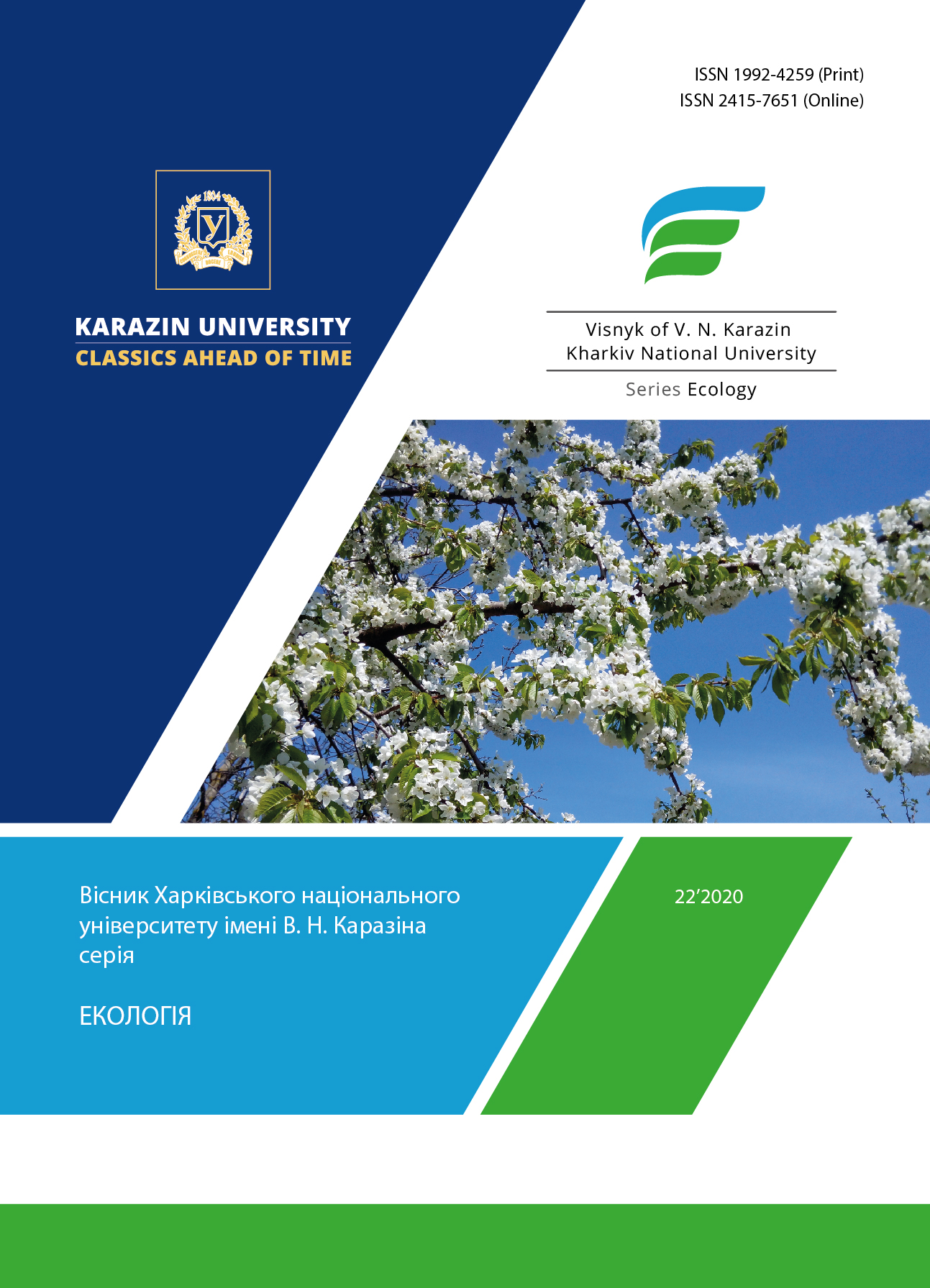Influence of Oxygen and Carbon Dioxide on Water Purification from Bacteria and Yeast Under Cavitation Conditions
Abstract
Purpose is to study the purification process of water polluted by containing Bacillus cereus bacteria type and Saccharomyces сerevisiae yeast type under cavitation conditions and atmosphere of different gases nature (oxygen and carbon dioxide); to evaluate and to compare the destruction efficiency of bacterial with yeast cells, and to determine the effective gas nature during cavitation treatment of the aqueous system.
Methods. The investigated model media were sounded by the action of an ultrasonic generator (UZDN-2T) with a frequency of 22 kHz, with a power of 35 watts. Оxygen and carbon dioxide were gas bubbles as an additional embryos of cavitation. Microorganisms number before and after sonication was determined by counting of the colonies grown on the nutrient medium in a Petri dish and expressed in colony-forming units (CFU).
Results. The results of the morphological characteristics of bacteria and yeast, as well as images of cells according to the results of microscopic studies at a corresponding magnification characteristic of a particular microorganisms types are presented. Degrees of microorganisms destruction, expressed in a percentage, were calculated. According to the results of studies, Bacillus cereus bacteria type were more likely to be destroyed,
compared with Saccharomyces cerevisiae yeast type at the conditions of simultaneous action of gas and cavitation. The resistance of yeast cells is explained by the result of the specific effect of cavitation on the yeast cell wall and their inter-genetic difference in cell wall structures. Higher efficiency of oxygen in the processes of cavitation treatment of both bacteria and yeast, compared to the action of carbon dioxide is shown experimentally.
Conclusions. More active destruction of bacterial cells compared to yeast in the gas/cavitation conditions shown that is explained by the age-related signs of the bacteria. It has been investigated that oxygen under cavitation conditions is described by a larger value of the microorganisms destruction, that is explained by the nature of the gas action at the experimental conditions. It is shown that the efficiency of water purification from microorganisms depends on the nature of the gas bubbled under cavitation conditions.
Downloads
References
Myahchenko, O. P. (2010). Fundamentals of ecology. Kyiv, Center for Educational Literature (in Ukrainian).
Alokhina, T. M., Bobko, A. O. & Malakhov, I. M. (2008). Content of heavy metals in water and sediments of the Ingulets River. Hydrobiological Journal, 44(3), 114-120 (in Ukrainian).
Salo, T. L., Chornokozynskyy, A. V. & Vashkulat, M. P. (2008). Impact of urban wastewater on the formation of water quality in the Middle Dnieper basin. Environment and health, 3(46), 76-78 (in Ukrainian.
Burya, O. I. & Kudyna, O. F. (2006). Water - Properties, Problems and Methods of Purification. Dnepropetrovsk: Thresholds (in Ukrainian).
Bhavya, M. L. & Umesh, H. H. (2019). Sono-photodynamic inactivation of Escherichia coli and Staphylococcus aureu in orange juice. Ultrasonics Sonochem., 57, 108-115.
Iorio, M. C., Bevilacqua, A., Corbo, M. R., Sinigaglia, М. & Altieri, С. (2019). A case study on the use of ultrasound for the inhibition of Escherichia coli O157:H7 and Listeria monocytogenes in almond milk. Ultrasonics Sonochem., 52, 477-483.
Kong, Y., Peng, Y. & Zhang, Zh. (2019). Removal of Microcystis aeruginosa by ultrasound: Inactivation mechanism and release of algal organic matter. Ultrasonics Sonochem., 56, 447-457.
Li, Y., Shi, X., Zhang, Zh. & Peng, Y. (2019). Enhanced coagulation by high-frequency ultrasound in Micro-cystis aeruginosa-laden water: Strategies and mechanisms. Ultrasonics Sonochem., 55, 232-242.
Carrillo-Lopez, L. M., Huerta-Jimenez, M. & Garcia-Galicia, I. A. (2019). Bacterial control and structural and physicochemical modification of bovine Longissimus dorsi by ultrasound. Ultrasonics Sonochem., 58, 104-108.
Park, J., Son, Y. & Lee, W. H. (2019). Variation of efficiencies and limits of ultrasonication for practical algal bloom control in fields. Ultrasonics Sonochem., 55, 8-17.
Palanisamy, N., Seale, B. & Turner, A. (2019). Low frequency ultrasound inactivation of thermophilic bacilli (Geobacillus spp. and Anoxybacillus flavithermus) in the presence of sodium hydroxide and hydrogen peroxide. Ultrasonics Sonochem., 51, 325-331.
Stamper, D. M., Holm, E. R. & Brizzolara, R. A. (2008). Exposure times and energy densities for ultrasonic disinfection of Escherichia coli, Pseudomonas aeruginosa, Enterococcus avium, and sewage. Journal of Environmental Engineering and Science, 7(2), 139-146.
Lambert, N., Rediers, H., Hulsmans, A. & Joris K. (2010). Evaluation of ultrasound technology for the disinfection of process water and the prevention of biofilm formation in a pilot plant. Water Sci Technol., 61(5), 1089-1096.
Naddeo, V., Cesaro, A., Mantzavinos, D. & Fatta-Kassinos, D. (2014). Water and wastewater disinfection by ultrasound irradiation - a critical review. Global Nest Journal, 16(3), 561-577.
Luhovskyi, O. F., Gryshko, I. A. & Bernyk, I. M. (2018). Enhancing the Efficiency of Ultrasonic Wastewater Disinfection Technology. Journal of Water Chemistry and Technology, 40, 95-101.
Koval, I. Z. (2017). Microbial disaggregation with and without gas bubbling under cavitation conditions. The environment and the industry, 22, 56-60.
Authors who publish with this journal agree to the following terms:
- Authors retain copyright and grant the journal right of first publication of this work under the terms of a license Creative Commons Attribution License 4.0 International (CC BY 4.0).
- Authors are able to enter into separate, additional contractual arrangements for the non-exclusive distribution of the journal's published version of the work (e.g., post it to an institutional repository or publish it in a book), with an acknowledgement of its initial publication in this journal.
- Authors are permitted and encouraged to post their work online (e.g., in institutional repositories or on their website) prior to and during the submission process, as it can lead to productive exchanges, as well as earlier and greater citation of published work.





